Scientists build 'mechanically active' DNA material
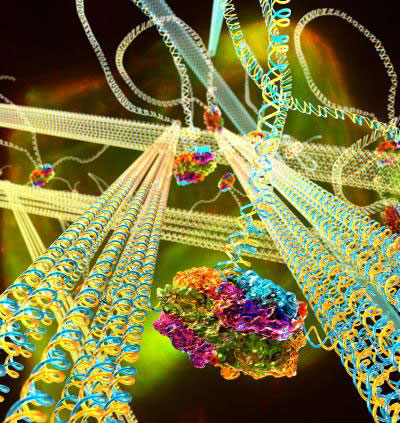 Researchers at UC Santa Barbara designed a 'smart' material made of DNA that responds with movement when stimulated.
Researchers at UC Santa Barbara designed a 'smart' material made of DNA that responds with movement when stimulated.
Oct 23rd, 2012
Read more
 Researchers at UC Santa Barbara designed a 'smart' material made of DNA that responds with movement when stimulated.
Researchers at UC Santa Barbara designed a 'smart' material made of DNA that responds with movement when stimulated.
Oct 23rd, 2012
Read more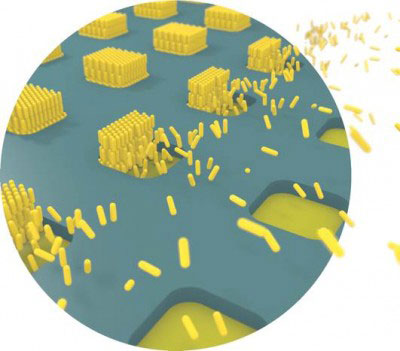 The result is gold nanostructures with superior abilities that can be built into monitoring equipment to sense the presence of chemical and biological pollutants. They are 36 times more sensitive than current commercial sensing substrates.
The result is gold nanostructures with superior abilities that can be built into monitoring equipment to sense the presence of chemical and biological pollutants. They are 36 times more sensitive than current commercial sensing substrates.
Oct 23rd, 2012
Read moreFor the first time, an assembly of thousands of nano-machines capable of producing a coordinated contraction movement extending up to around ten micrometers, like the movements of muscular fibers, has been synthesized by a CNRS team from the Institut Charles Sadron.
Oct 23rd, 2012
Read more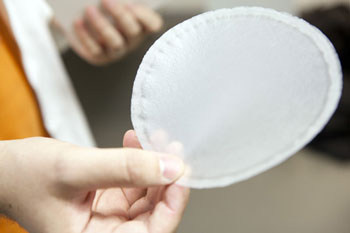 Researchers at Aalto University have succeeded in developing a durable and affordable nanofibrillar cellulose film platform to support medical testing. New environmentally friendly, reliable nanofibrillar cellulose (NFC) platforms are more diverse than plastic films.
Researchers at Aalto University have succeeded in developing a durable and affordable nanofibrillar cellulose film platform to support medical testing. New environmentally friendly, reliable nanofibrillar cellulose (NFC) platforms are more diverse than plastic films.
Oct 23rd, 2012
Read more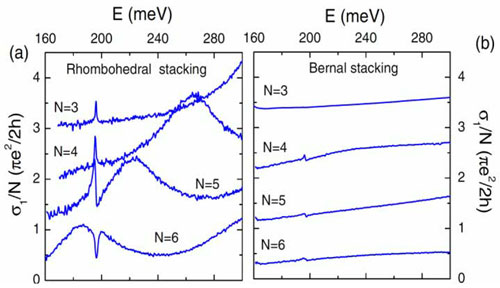 Studies of the effects of stacking order on graphene are in relative infancy, but recent experiments from scientists working at the National Synchrotron Light Source at Brookhaven National Laboratory have shed light on the chameleonic nature of this material.
Studies of the effects of stacking order on graphene are in relative infancy, but recent experiments from scientists working at the National Synchrotron Light Source at Brookhaven National Laboratory have shed light on the chameleonic nature of this material.
Oct 23rd, 2012
Read moreA research team from the University of Bristol's Centre for Quantum Photonics (CQP) have brought the reality of a quantum computer one step closer by experimentally demonstrating a technique for significantly reducing the physical resources required for quantum factoring.
Oct 23rd, 2012
Read moreResearchers succeeded in the characterization of bone cement by using nanoindentation and nano scratch tests.
Oct 23rd, 2012
Read more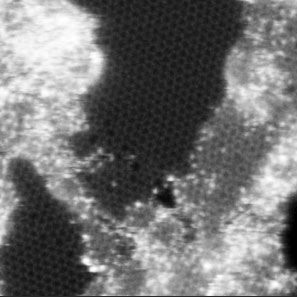 New membranes may filter water or separate biological samples.
New membranes may filter water or separate biological samples.
Oct 23rd, 2012
Read more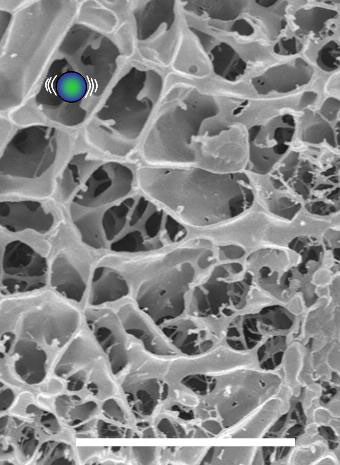 Scientists discovered that a rigid gel scaffold in lung mucus separates large, fluid-filled pores and prevents nanoparticle movement beyond individual pore boundaries.
Scientists discovered that a rigid gel scaffold in lung mucus separates large, fluid-filled pores and prevents nanoparticle movement beyond individual pore boundaries.
Oct 22nd, 2012
Read moreThousands are expected to attend month-long series of events that showcase the exciting world of nanotechnology and global leadership of CNSE and New York State.
Oct 22nd, 2012
Read moreScientists at the Naval Research Laboratory have demonstrated that graphene, a single layer of carbon atoms in a honeycomb lattice, can serve as a low resistance spin-polarized tunnel barrier contact which successfully enables spin injection/detection in silicon from a ferromagnetic metal.
Oct 22nd, 2012
Read more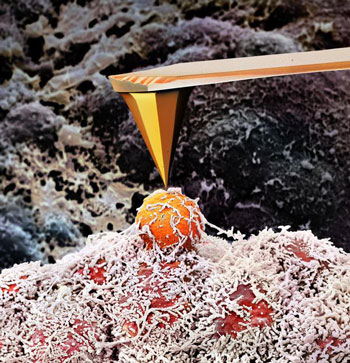 The discovery of specific breast cancer 'fingerprints' was made using breakthrough nanotechnology known as ARTIDIS.
The discovery of specific breast cancer 'fingerprints' was made using breakthrough nanotechnology known as ARTIDIS.
Oct 22nd, 2012
Read moreMIT researchers find that lubricated, nanotextured surfaces improved performance of condensers in power and desalination plants.
Oct 22nd, 2012
Read more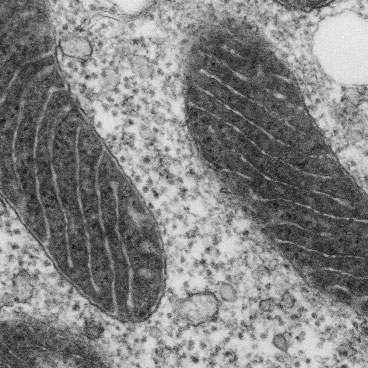 Protein-labeling technique allows high-resolution visualization of molecules inside cells.
Protein-labeling technique allows high-resolution visualization of molecules inside cells.
Oct 22nd, 2012
Read more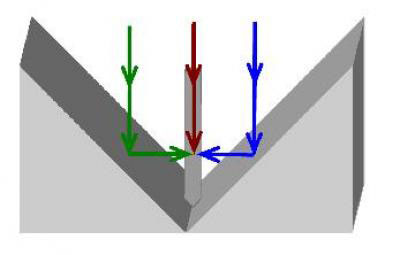 Scientists have proposed a novel scheme to enhance the local electric fields around nanostructures. The scheme is based on manipulation of the incident wave to allow the superposition of the electric fields of multiple beams of light to work as the excitation source for the electrons in the nanostructures, and larger electric fields are thus excited around the nanostructures.
Scientists have proposed a novel scheme to enhance the local electric fields around nanostructures. The scheme is based on manipulation of the incident wave to allow the superposition of the electric fields of multiple beams of light to work as the excitation source for the electrons in the nanostructures, and larger electric fields are thus excited around the nanostructures.
Oct 21st, 2012
Read more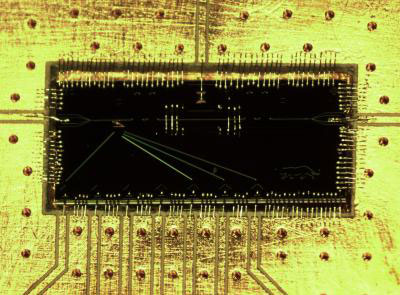 In a key step toward creating a working quantum computer, Princeton researchers have developed a method that may allow the quick and reliable transfer of quantum information throughout a computing device.
In a key step toward creating a working quantum computer, Princeton researchers have developed a method that may allow the quick and reliable transfer of quantum information throughout a computing device.
Oct 19th, 2012
Read more